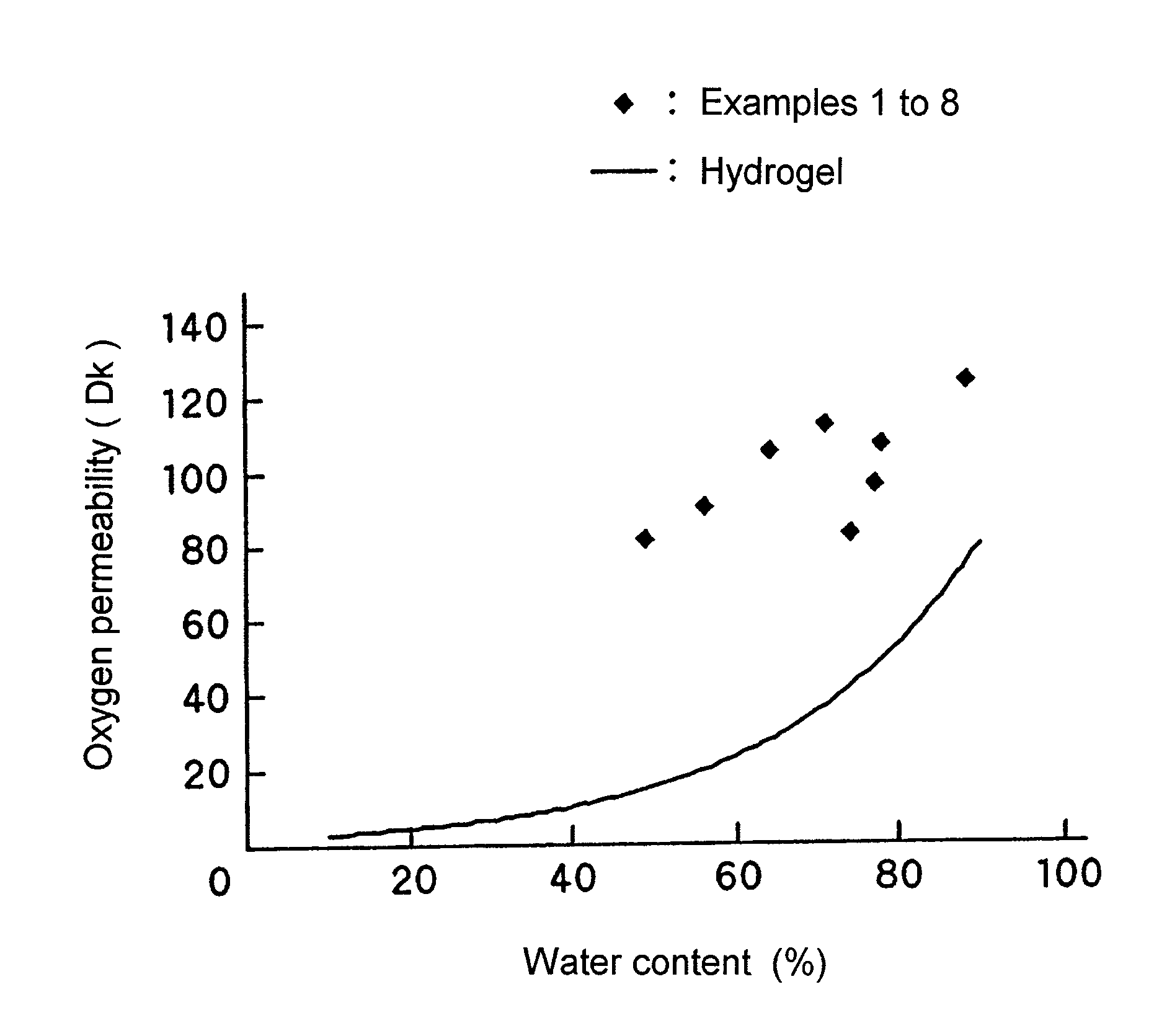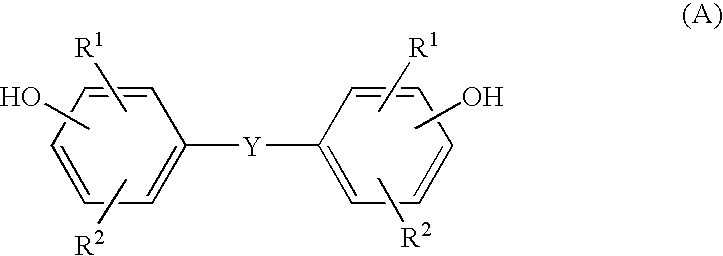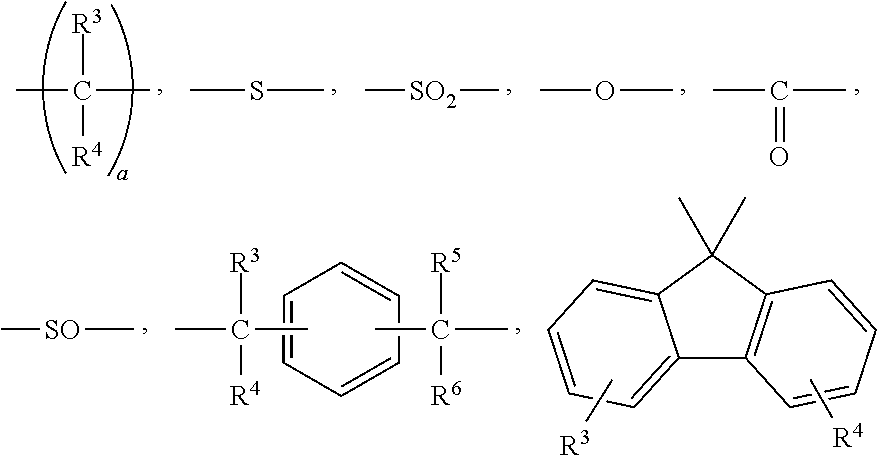Transparent gel and contact lense from the same
a technology of transparent gel and contact lens, which is applied in the field of transparent gel, can solve the problems of difficult to synthesize macromonomer, difficulty in obtaining suitable properties for functioning as cross-linking agent, and sometimes inability to achieve stable polymerization, etc., and achieves excellent gel strength, oxygen permeability, and gel strength. good, easy-to-synthesize
- Summary
- Abstract
- Description
- Claims
- Application Information
AI Technical Summary
Benefits of technology
Problems solved by technology
Method used
Image
Examples
synthesis example 1
[0072]In 30 L of 8.8% (w / v) sodium hydroxide were dissolved 3.904 kg of 9,9-bis(4-hydroxy-3-methylphenyl)fluorene (Osaka Gas Chemical Co., Ltd.: BCF) (hereinafter referred to as “BCFL”), 3.904 kg of polyorganosiloxane compound containing the following structure (Shin-Etsu Chemical Co., Ltd.: X-22-1875) (hereinafter referred to as “Si-1”), and 20 g of hydrogen sulfide.
[0073]27 L of dichloromethane was added to the resultant, and 1.790 kg of phosgene was blown into the resultant at 0.12 kg / min under agitation at 15° C.
[0074]Then, 119.8 g of p-tert-butylphenol (hereinafter referred to as “PTBP”) and 10 L of 8.8% (w / v) sodium hydroxide were added to the resultant, followed by strongly agitating for 10 minutes, and furthermore 20 mL of triethylamine was added agitating for 1 hour to conduct polymerization.
[0075]
X is
[0076]
[0077]The polymers were separated into an aqueous phase and an organic phase, and the organic phase was neutralized by using phosphoric acid, and washed with water repea...
synthesis example 2
[0081]A polymer was synthesized by the same manner as Synthesis Example 1, except for changing amounts of BCFL to 3.904 kg, of Phosgene to 1.610 kg, and of PTBP to 107.8 g, and using 3.904 kg of a polyorganosiloxane compound containing the following structure (Shin-Etsu Chemical Co., Ltd.: X-22-1821) (hereinafter referred to as “Si-2”) instead of Si-1.
[0082]Limit viscosity [η] of the obtained polymer was 0.24 dL / g, and as the result of infrared spectrum and others, this polymer was confirmed as the same polycarbonate polymer structure as the polymer shown in Synthesis example 1 except for a polymerization ratio.
[0083]
X is
[0084]
synthesis example 3
[0085]A polymer was synthesized by the same manner as Synthesis Example 1, except for changing amounts of BCFL to 4.685 kg, of Si-1 to 3.123 kg, of Phosgene to 1.980 kg, and of PTBP to 135.0 g. Limit viscosity [η] of the obtained polymer was 0.25 dL / g, and as the result of infrared spectrum and others, this polymer was confirmed as the same polycarbonate polymer structure as the polymer shown in Synthesis example 1 except for a polymerization ratio.
PUM
| Property | Measurement | Unit |
|---|---|---|
| transparency | aaaaa | aaaaa |
| temperature | aaaaa | aaaaa |
| temperature | aaaaa | aaaaa |
Abstract
Description
Claims
Application Information
 Login to View More
Login to View More - R&D
- Intellectual Property
- Life Sciences
- Materials
- Tech Scout
- Unparalleled Data Quality
- Higher Quality Content
- 60% Fewer Hallucinations
Browse by: Latest US Patents, China's latest patents, Technical Efficacy Thesaurus, Application Domain, Technology Topic, Popular Technical Reports.
© 2025 PatSnap. All rights reserved.Legal|Privacy policy|Modern Slavery Act Transparency Statement|Sitemap|About US| Contact US: help@patsnap.com



